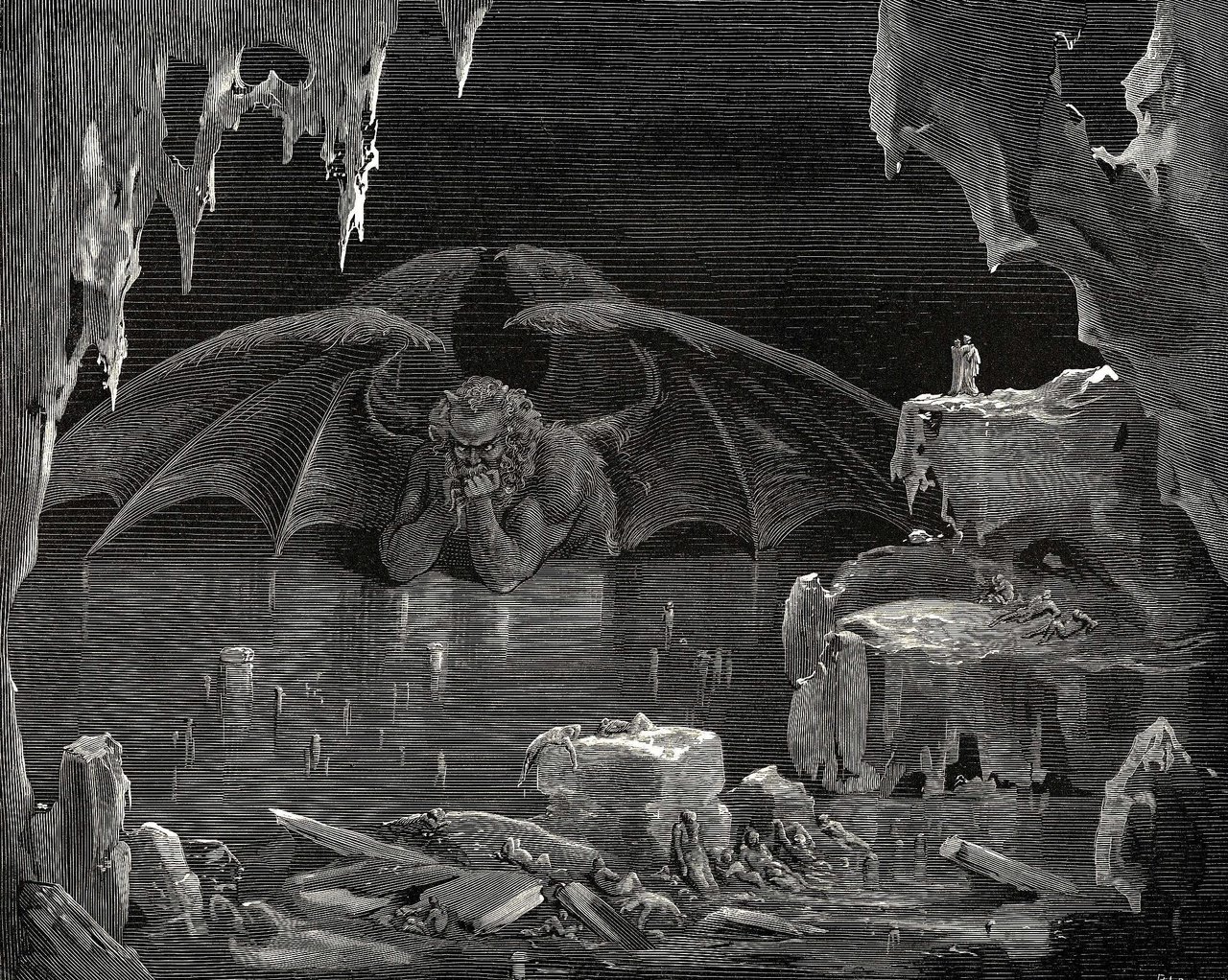Fuckers tricked me with that stupid ice. HELL IS NOT COLD GODDAMNIT
Not according to ol Dante:

The Ninth Circle is ringed by classical and Biblical giants. The giants are standing either on, or on a ledge above, the ninth circle of Hell, and are visible from the waist up at the ninth circle of the Malebolge. The giant Antaeus lowers Dante and Virgil into the pit that forms the ninth circle of Hell. (Canto XXXI) Traitors, distinguished from the "merely" fraudulent in that their acts involve betraying one in a special relationship to the betrayer,
are frozen in a lake of ice known as Cocytus. Each group of traitors is
encased in ice to a different depth, ranging from only the waist down to complete immersion. The circle is divided into four concentric zones:
Round 1: Caïna, named for Cain, is home to traitors to their kindred. The souls here are immersed in the ice up to their necks. (Canto XXXII)
Round 2: Antenora is named for Antenor of Troy, who according to medieval tradition betrayed his city to the Greeks. Traitors to political entities, such as party, city, or country, are located here. Count Ugolino pauses from gnawing on the head of his rival Archbishop Ruggieri to describe how Ruggieri imprisoned and starved him and his children. The souls here are immersed at almost the same level as those in Caïna, except they are unable to bend their necks. (Cantos XXXII and XXXIII)
Round 3: Ptolomæa is probably named for Ptolemy, the captain of Jericho, who invited Simon Maccabaeus and his sons to a banquet and then killed them. Traitors to their guests are punished here. Fra Alberigo explains that sometimes a soul falls here before the time that Atropos (the Fate who cuts the thread of life) should send it. Their bodies on Earth are immediately possessed by a fiend. The souls here are immersed so much that only half of their faces are visible. As they cry, their tears freeze and seal their eyes shut- they are denied even the comfort of tears. (Canto XXXIII)
Round 4: Judecca, named for Judas the Iscariot, Biblical betrayer of Christ, is for traitors to their lords and benefactors. All of the sinners punished within are completely encapsulated in ice, distorted to all conceivable positions.
Satan is trapped in the frozen central zone in the Ninth Circle of Hell, Inferno, Canto 34.
Dante and Virgil, with no one to talk to, quickly move on to the center of hell. Condemned to the very center of hell for committing the ultimate sin (treachery against God) is Satan, who has three faces, one red, one black, and one a pale yellow, each having a mouth that chews on a prominent traitor. Satan himself is represented as a giant, terrifying beast, weeping tears from his six eyes, which mix with the traitors' blood sickeningly. He is waist deep in ice, and beats his six wings as if trying to escape, but the icy wind that emanates only further ensures his imprisonment (as well as that of the others in the ring). The sinners in the mouths of Satan are Brutus and Cassius in the left and right mouths, respectively, who were involved in the assassination of Julius Caesar (an act which, to Dante, represented the destruction of a unified Italy), and Judas Iscariot (the namesake of this zone) in the central, most vicious mouth, who betrayed Jesus. Judas is being administered the most horrifying torture of the three traitors, his head in the mouth of Lucifer, and his back being forever skinned by the claws of Lucifer. (Canto XXXIV) What is seen here is a perverted trinity. Satan is impotent, ignorant, and evil while God can be attributed as the opposite: all powerful, all knowing, and good. The two poets escape by climbing down the ragged fur of Lucifer, passing through the center of the earth, emerging in the other hemisphere just before dawn on Easter Sunday
beneath a sky studded with stars.